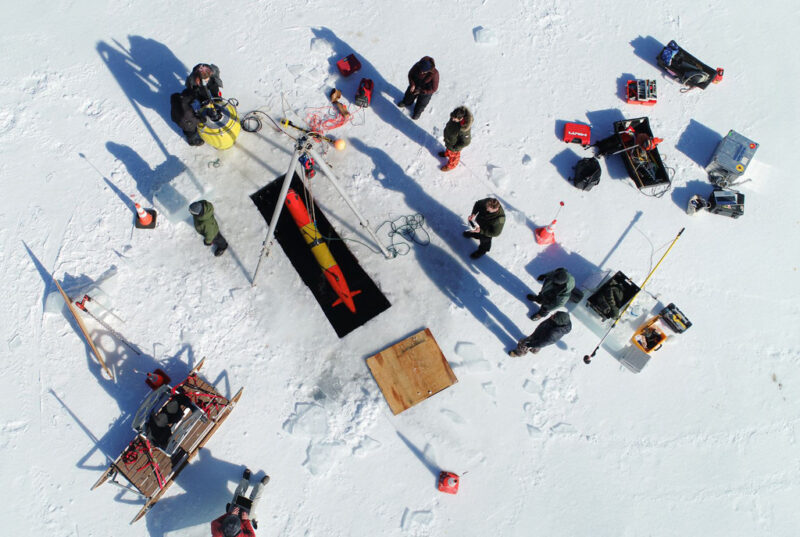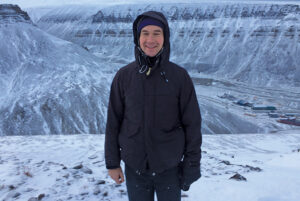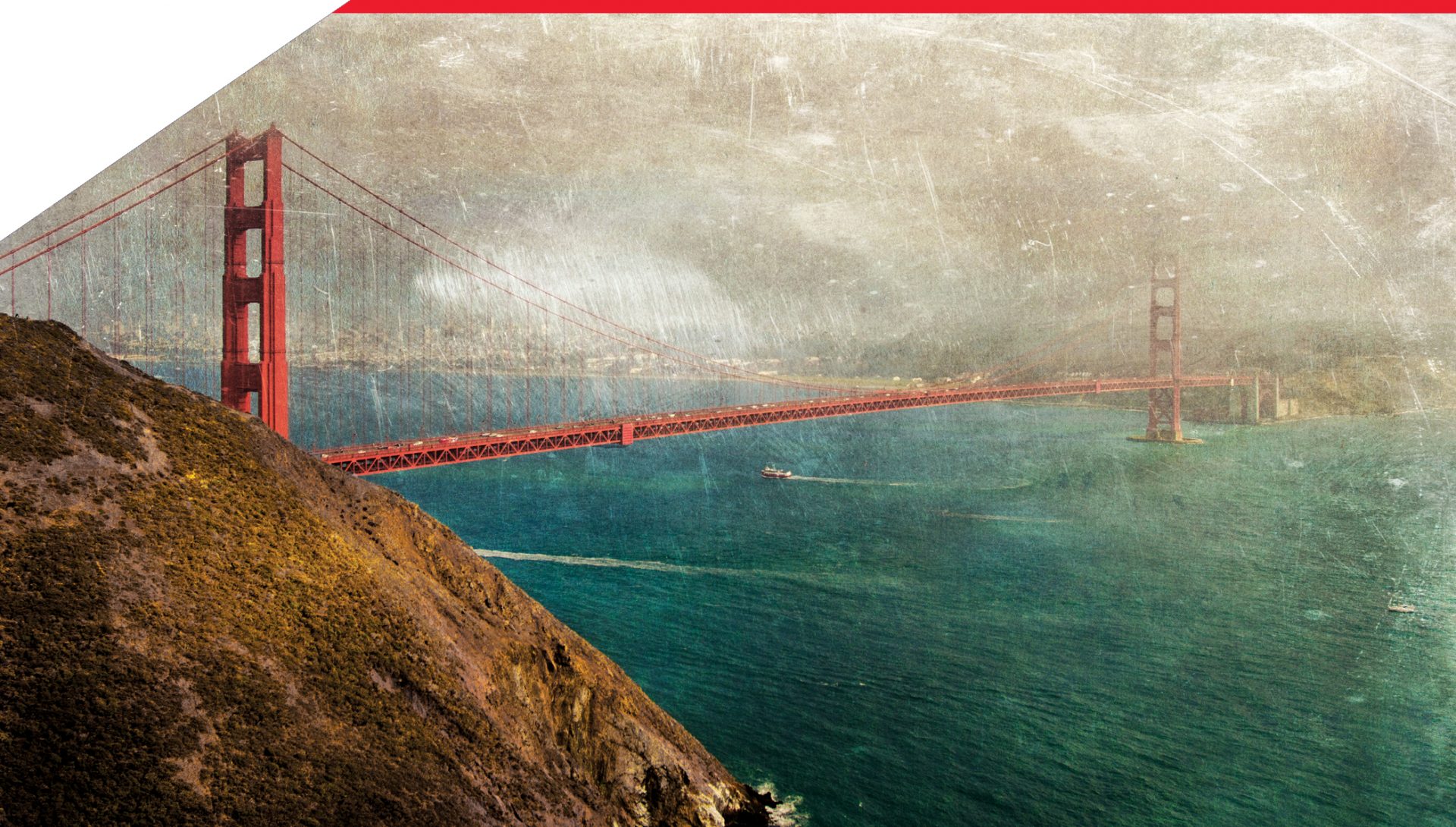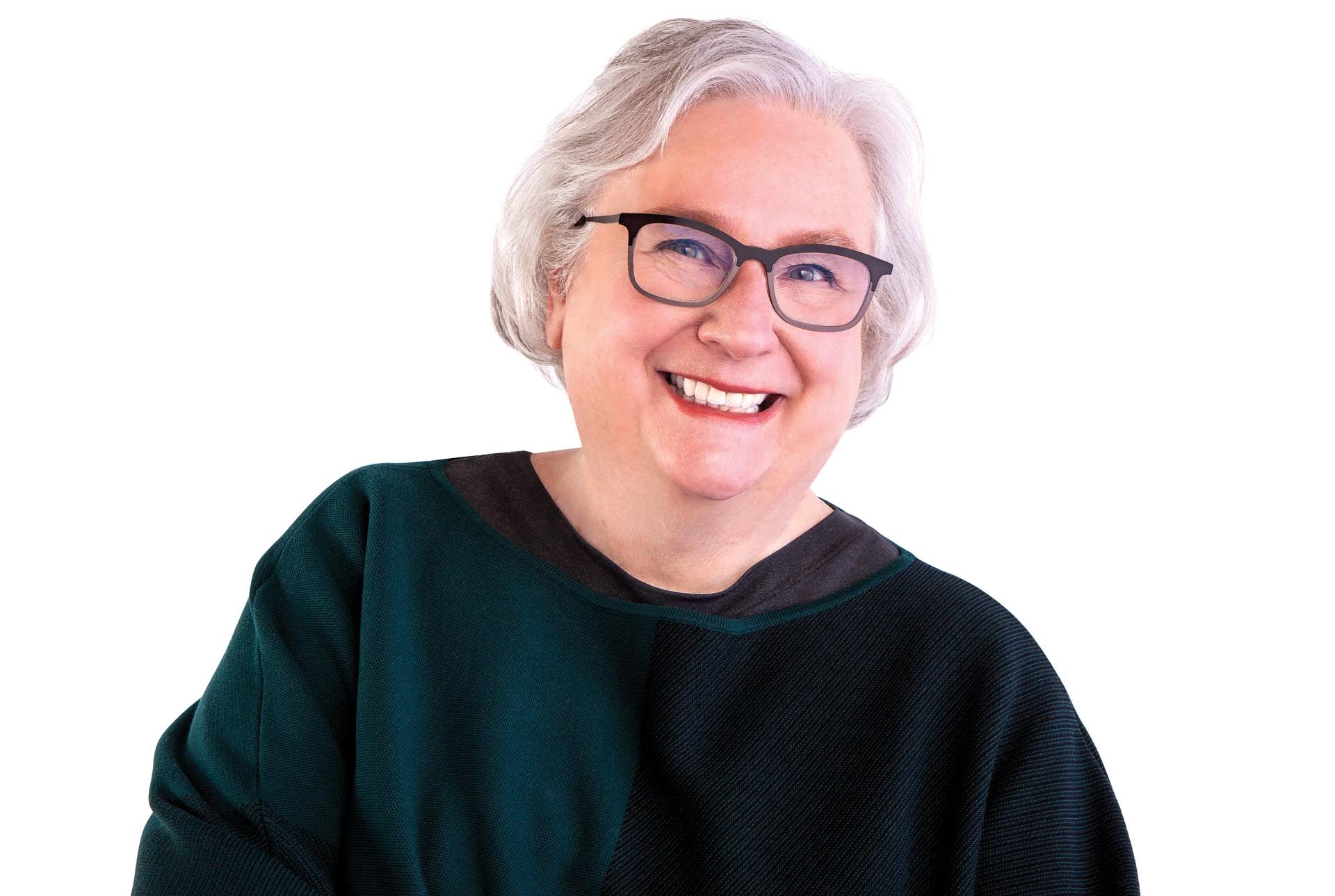Expanding the Boundaries of Possibility

Former physics major and studio arts student Daniel Gómez-Ibáñez ’00 has made a career of charting previously inaccessible territory.
By Kira Goldenberg
Daniel Gómez-Ibáñez graduated from Wesleyan in 2000, but the impact he made on campus remains visible to this day. On the walls in the physics department, 21 years after the physics and studio art dual major set off on his post-college adventures, there are still four pieces of genre-melding artwork Gómez-Ibáñez crafted during his tenure at the University.
Three of them are charcoal drawings of physics lab equipment: a gas valve, accelerator column, and a vise, all hanging on the walls of Foss Professor of Physics, Emeritus, Thomas Morgan’s lab.
“He had a friend who was working in my lab, and so he came one day and he got intrigued by the equipment,” Morgan remembers, adding that Gómez-Ibáñez excelled at physics, earning top grades in Wesleyan’s most advanced courses.
Gómez-Ibáñez’s genre-melding pièce de résistance is hanging in the physics department hallway to this day: a spin lattice simulator in the form of a light-up circuit board meant to represent the magnetic properties of certain atoms. More than two decades later, it still works—mostly.
“One of the control knobs died, and I’ve been meaning to fix it for 20 years,” he said.

But he’s been plenty busy in the interim. For the past 16 years, after getting a master’s at Stanford, he has been an engineer at the Woods Hole Oceanographic Institution in Falmouth, Massachusetts, where he ended up specializing in the propulsion of autonomous underwater vehicles, literally expanding the boundaries of possibility.
“I’m the ‘figure out how to do it’ guy, so a lot of times the scientist comes to me with a wacky idea, and we have to figure out how to do that,” he said. “Once you’ve done the first one, it’s easier to do the second one, so you get called back.”
He’s been integral to developing several batteries to power different types of deep-sea vehicles. In the early aughts, he was part of the team that built the battery powering the Nereus, a remotely controlled vehicle that reached the bottom of the Mariana Trench. This allowed scientists to explore those previously off-limits environments in real time while also collecting video and sensor data.
And more recently, Gómez-Ibáñez was central to the team that built Clio, an autonomous underwater vehicle that collects both biological and chemical samples from ocean water at various depths as it travels vertically through it.
His innovations allow scientists to collect a wider sampling of ocean water with greater efficiency, increasing human access to and knowledge of previously inaccessible depths.
“Maybe it’s because I went to Wesleyan, but one of the things I feel like I’m good at is synthesizing many different design domains and constraints to find a solution,” he said. “You have this cross-interplay between electrical power, mechanical power, acoustics, software, optics; all the engineering specialties are kind of mixed together.”
Adam Modesitt ’00, a fellow studio art and physics major, agrees.
“[There] was an excitement for looking at the world in different ways, exploring and messing around,” said Modesitt, a friend of Gómez-Ibáñez’s and now an architecture professor at Tulane University. “It doesn’t surprise me at all that he’s building autonomous robots.”
This summer, his deep dive in that area continued: Gómez-Ibáñez embarked on a Fulbright fellowship that enabled him to travel to Norway, where he is slated to help develop underwater docking stations for autonomous vehicles that will allow for steady remote access to the depths of the Arctic Ocean, enabling scientists to simultaneously document climate change and its effects. It’s a harsh climate for humans to remain in for long periods, so the docking stations will be an innovative way to track changes that require long stretches of data-gathering.
“There are events that happen—like weather events or the polar vortex, or volcanoes erupting—that are hard to capture if you’re not there,” he said. “So if you have a submarine that’s parked there all the time, a lot of times you can learn a lot of things by doing the same thing every month all year.”
The new project will allow him to use his expertise to travel after a year when the world was forcibly still. Gómez-Ibáñez said the pandemic pause gave him the time to reconsider the contours of his existence, which he did by reflecting on his senior thesis project advisor at Wesleyan.
“I thought, ‘If I was [late studio arts professor] David Schorr, how would I escape burnout after teaching for 27 years? He became a Fulbright Scholar in India,” he said.
He fondly remembers Schorr, who died in 2018, as a mentor who helped shape his intellect by pushing him to realize his full creative potential as Gómez-Ibáñez completed his studio art thesis.
“You have this blank room and you have to fill it up with something, and nobody can guide you to a solution so you have to create something out of nothing,” Gómez-Ibáñez said. “And I think it sort of informed a way of living in that there is no answer—there’s not really a path. You have all these ideas, and you have to somehow synthesize them into a path forward, even if it seems like nothing makes any sense and there’s no reason to choose ‘this’ over ‘that.’ At the end of the day, you have to put something up on the wall.”
Or inside the battery pack of a deep-sea vehicle with places to go.
Top photo: Daniel Gómez-Ibáñez specializes in the propulsion of autonomous underwater vehicles like this one launched with the Scibiotics Lab in Maine’s Bog Lake. Photo by Sean Whelan courtesy Amy Kukulya.



